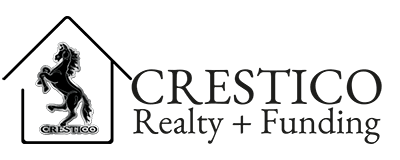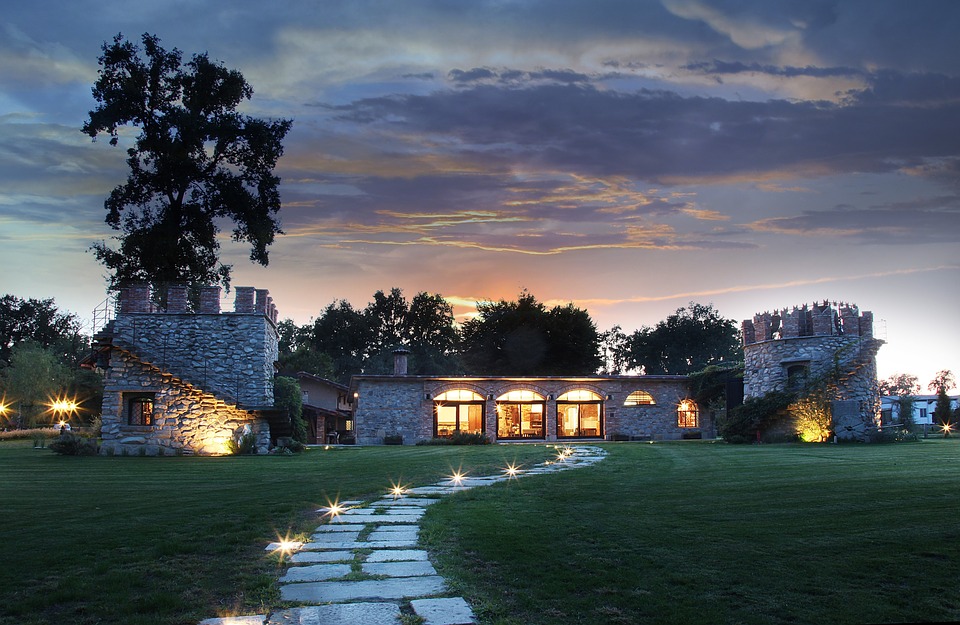by David Glenn | Sep 6, 2016 | CRESTICO
A house isn’t just a place where you can walk around in your undies or for eating ice cream right out of the tub. A home aligns with your personality and your preferences. Every corner, crevice, and arrangement of rooms and beams all embody the homeowner and define how he/she lives. Finding the right property that offers adequate space and comfort, a good price point, and real value can be tricky, however, thanks to the dozens of property listings you’ll find in the market. Here are five tricks to knowing when you’ve found the perfect abode.
Define Who You Are
This doesn’t mean you should go on a self-discovery phase before finding a house. On a profound level, determine who you are as a person and as a professional. What career changes do you expect to encounter in a 5- or 10-year period? Are you planning to have children or pets in the house? Are you a gardener or a woodworker? Do you like throwing parties for friends and family or just enjoying weekends in peace and quiet? Knowing the answers to these questions will put you at a much better position to find a home that supports your lifestyle choices.
Know What Types of Housing Exist
Luckily, there are fewer housing types than there are personalities. Still, it makes sense to understand and embrace the different types of housing accessible today. Single-family homes, townhouses, and condominium units are three of the most popular types of housing. Townhouses are basically a hybrid between the more expensive single-family house and the least-spacious condominium unit. While condos are definitely a good investment, especially if you buy around business centers and well-developed locations, the idea of having neighbors around you doesn’t really appeal to some aspiring homeowners.
Consider Buying an Existing Home
Buying an existing house instead of having one built from the ground up is usually the more affordable and faster option on the table. Although it may not precisely match what house you envision for you and your family, being able to pick from a wide selection of houses that’s ready for you to move into is a decent trade-off. You can choose houses based on the included amenities, such as a garden, patio, or swimming pool, or even based on style. Some fleece covered furniture, for instance, might be preferred by buyers over wool or other materials.
Filter Choices Based on Pricing
Houses that align with your personality but cost too much are never a smart investment. Buy or finance housing that you are comfortable paying for over a stretched period of time. Narrow down your choices based on houses that meet your budget. Establish a ceiling and floor price range. When negotiating with sellers, try to keep the numbers from crossing the established ceiling and floor prices. If they cannot meet you halfway, then walk away. There’s always somebody else somewhere that could meet your budget requirements.
Ask Trusted Family or Friends to Help You
Who else to advise you on what would be the right home for you than trusted family members and close friends? These people have spent a considerable amount of time with you so they have a good idea of who you are and what you really want. In some cases, their suggestions might make even better sense since they’re able to make objective decisions. You, on the other hand, might be stepping too close to the project that you overlook some important details or refuse to consider some mitigating factors out of bias.
Finding the perfect home that matches your personality will take some degree of effort that few aspiring homeowners are genuinely willing to take. With the five simple tips above, you’ll be able to find a suitable home for you and your family without breaking the bank or compromising design and comfort.
by David Glenn | Jul 10, 2016 | CRESTICO
When it comes time for individuals or families to pick where they want to buy a new home, two of the biggest deciding factors are the neighborhood’s health and safety and the area’s property values and the future prospects for an increase in home or condo prices.
Civic leaders, neighborhood organizations, and local governments have many tools available to help improve neighborhoods and increase residents’ property values. For instance, instituting neighborhood watch programs and deploying additional police officers can help reduce crime and make streets safer for residents.
Increasingly, savvy communities are making another bet that has the potential to improve health and increase property values: ensuring that community gardens and health promotion are central to neighborhood development and redevelopment plans.
Rising public awareness of food deserts has been an important reason for the spread of community gardens and neighborhood-wide health promotion efforts. Food deserts – swathes of urban areas where fresh produce is either very unaffordable or entirely unavailable – are common in almost every American city.
Research has shown that food deserts are correlated with high rates of poverty and poor health outcomes. In areas where fresh food is not available, residents (especially those without reliable forms of transportation) are forced to primarily eat junk food. This leads to obesity and related diseases, such as diabetes, heart disease and, ultimately, premature death.
Sadly, neighborhoods that are located in food deserts are often filled with people who are uninsured and do not have reliable access to a doctor or other medical care. A combination of poor diet and lack of access to medicine means that the people who live in these neighborhoods are dramatically less healthy than the rest of the American population.
With public knowledge of food deserts increasing, city governments, local business & charitable organizations have focused on increasing access to fresh, healthy food and tackling bad diets and a lack of health access at the neighborhood level. This has included a range of efforts, different throughout the country, aimed at creating community gardens and promoting a healthier lifestyle.
As an added benefit, these efforts can improve property values for all of the community’s residents.
Using new resources, including some provided by the Affordable Care Act, governments and nonprofits have been able to provide more health-promotion services to more community residents. For instance, higher rates of insurance and more funding for community health centers allows more people in a neighborhood to receive needed medical care and be connected to appropriate support services.
Those support services can also bring people together to strengthen a community in a variety of ways. Group exercise classes, instruction on how to improve diets, fitness activities for toddlers and children, and even cooking classes can all be a part of the work a health-promoting neighborhood does to help its residents live healthier lives.
In some cities, for instance, neighborhood groups can encourage residents to participate in groups walks through the community, allowing people to get additional exercise. Elsewhere, more support – such as through the federal Community Eligibility Program – allows all young people, regardless of their family income, to receive the nutrition they need to survive and thrive.
Infrastructure also plays an important role in making a neighborhood one that encourages better health, instead of sedentary, unhealthy lifestyles. Safer sidewalks, the introduction of bike lanes, community centers that host fitness and cooking classes – all of these resources and investments improve the quality of life in a neighborhood and make it more attractive to homebuyers and Real Estate developers. As a result, property values rise.
The same increase in property values can be seeing in another feedback loop. As health improves, family incomes often rise as well. With bigger paychecks, neighborhood residents are able to invest more in their homes, boosting property values. After the first wave of home improvements are made, younger and more-educated workers often follow into the neighborhood, increasing property values further in a process often referred to as “gentrification.”
Of course, the benefits of community gardens and health-promoting neighborhoods are not just limited to low-income neighborhoods. While health promotion activities are often geared at people at or near the poverty line, neighborhoods and communities that choose to invest in the infrastructure that supports a healthy lifestyle often see dramatic increases in property values.
For instance, in the battle to attract young, so-called “knowledge workers” to a community, having top-notch sidewalks and a system of bike lanes are essential. Not coincidentally, both of these resources are essential in helping citizens safely exercise.
Health-promoting neighborhoods and those with community gardens can also make life easier for people on a gluten free meal plan. The availability of fresh produce and healthy food in a community makes it easier for people who are avoiding gluten for medical reasons (e.g. Celiac disease) or general health concerns to eat safe, healthy gluten free diets.
Community gardens can also have wide-ranging effects in neighborhoods that adopt them. In addition to providing an opportunity for outdoor activities and a source of fresh produce, community gardens are excellent tools to teach urban residents about a healthy diet and expose them to varieties of fruits and vegetables they may never have eaten before.
Just as important, community gardens can quickly become a neighborhood gathering place. This provides a place where parents and adults can discuss and socialize and children can play. The value of such a focal point of a community, especially in better-off neighborhoods that may not have a formal city-run community center, is hard to quantify but is widely viewed as a major benefit.
In addition, community gardens are an important beautification tool. Attractive, well-maintained appearances are one of the critical factors in determining property values and community gardens can go a long way to improving a neighborhood’s outward appearance in a sustainable, relatively low-cost fashion.
In short, health-promoting neighborhoods and community gardens are both great ways to build the fabric of a community and encourage healthier, more active lifestyles. And everyone in a community or neighborhood that adopts these strategies benefits as they lead to high property values and home prices.
by David Glenn | Jul 1, 2016 | CRESTICO
Real Estate is a great investment, it really is. Oh sure you’ll hear people who will tell you that it’s tougher than it looks, and it is, and others tell you that it’s really not worth it. But the people who usually say that are the ones who don’t own any property. Really properly evaluating a property investment and then planning correctly can lead to a huge pay off, so why do some people seem to get in over there head? It’s because a lot of people don’t realize how many other fees there are that they need to pay for.

1. Appraisal Fee
Now this fee is not huge in comparison to the other fees we will talk about or even the house, however, all fees are important. Every bit of money that you spend will be eating into your profits and you’ll want to account for this. You need to get someone to appraise the house so you can get a loan. An appraisal will cost you anywhere from $200 to $1,000. This is not something you want to forget about, having to suddenly fork over an extra $1,000 while your in the middle of budgeting to renovate is not fun, make sure you add this in the budget.

2. Insurance
Just like getting a car insurance quote before you buy a car most real estate investors forget to calculate in home owners insurance. Now most Real Estate investors figure that if they’re renting they’ll have the rental fee cover this, or if they’re flipping the house the profit will cover this. As anyone who has invested in real estate will tell you don’t count your chickens before they hatch. In other words don’t count on money you don’t have yet, make sure you include these costs in your calculated costs, this way you do’t get bit by any surprises towards the end. In order to calculate this into your costs give companies such as Geico a call to gather quotes.

3. Repair Costs
While trying to calculate a return on your investment make sure you include in your estimated repair costs. Now this may be easy for the obvious repairs that you see needed on a piece of property before you buy it, but if you are planning to rent out you need to calculate in the future repair costs as well. If you don’t take into account these repair costs you could find yourself running at a loss due to charging to low for rent in comparison to the repairs that you make. The cost of future repairs will of course depend on the type of property you buy as well as location.
In conclusion there are plenty of costs that people new to investing in real estate don’t expect. Don’t let this deter you from your investments. Instead take into account these costs so that you can ensure your investments end up being profitable for you. This way you can sleep peacefully with the knowledge that your investments are safe.
by David Glenn | Apr 14, 2016 | CRESTICO
To invest or not to invest in Real Estate? – While Shakespeare didn’t really coin such a popular line, he may have done so if he lived in the modern day and age where real estate has become such a perplexing space to break into, investment-wise. For the novice at heart, here’s a few reasons why it’s a worthwhile market to add to your portfolio and how you can succeed in your venture. Bear in mind that these reasons are purely objective and are unbiased towards the real estate market.
Higher Leverage
Property is one of the few financial assets that can easily be leveraged through a loan. The ability to make a small initial payment, leverage your investments, and as a result amplify your overall ROI is quite impressive. With all else being equal, property investors are able to borrow more when using real estate as collateral relative to using a stock portfolio. In fact, banks and private institutions will lend up to 30 percent more of the value of a property portfolio than they will the value of a stock portfolio.
Simpler to Research
Unlike stocks and currencies that have all sorts of fundamental drivers and data points you need to keep updated, investment property involves only a few key factors for buying and selling your holdings. Stocks, on the other hand, involve a steep learning curve before one can methodically and consistently extract profits. Depending on the property niche you are looking to partake in as well as future investment goals you have in mind, the research data you will be collecting and analyzing may vary. Luckily, real estate software is nowadays very high-tech and covers all the fundamental and specific steps crucial for investing.
Diversified Portfolio
Investing in real estate effectively distributes capital risk. Properties have had historically low if not negative correlation with other financial assets. This means times of volatility can still produce higher ROI relative to the risk involved. Balancing your portfolio with properties and stocks can be difficult, albeit. Make sure to plan ahead and look for property investments that can hedge against future stock volatility.
High ROI
One of the most attractive characteristics of real estate investment is its stable income return. Over a three-decade period which began in 1977, nearly 80 percent of overall US real estate returns were rental income-based. Income-based assets are actually less volatile as an investment compared to assets whose returns are based on capital valuations.
High Safety Rating
Housing is a relatively safe investment hence the age-old phrase “safe as houses”. According to http://www.yourinvestmentpropertymag.com.au/, the rate of increase in property valuation was comparable to that of the stock market since the late 1920s, approximately 11.4 percent per year. What makes this even more remarkable is that the consistent boost in valuation occurred during a series of economic disasters including wartime and recessions.
Attractive Tax Benefits
Rental units provide investors with a great opportunity to write off personal expenses to valid business deductibles. Keep in mind that rental properties are a form of business, which means expenses incurred in visiting and maintaining the units can be legally deducted from your annual taxes. This increases not only the tax benefits for your cash flow but also for the future resale value of the property.
Huge Retirement Nest Egg
Rental properties act somewhat as a forced retirement plan. People are naturally horrible financial planners and, even worse, money savers. People lack the willpower and self-discipline to deposit money into their IRAs and 401Ks. As a result, the tax benefits and the compounding effect tend to be weaker than the potential growth from maximum monthly deposits. A rental property is a big-ticket item, which ultimately forces you to be wiser, more disciplined, and more committed towards your portfolio.
Summary
There are many other advantages to picking up property as an investment. Aside from the ones aforementioned, you also have the fact that demand for rental units owned and managed by private landlords is increasing. Investing today also strategically positions you to acquire homes that were recently foreclosed and are therefore substantially cheaper. To get started with your real estate investment, start drafting a short-term and long-term plan. Attend open houses and talk with brokers who can help show properties that are up for grabs.
by CRESTICO | Dec 5, 2013 | CRESTICO, Mortgage, Real Estate
Distressed California Homeowners May Qualify for California’s Keep Your Home California Transition Assistance Program (TAP)
If your financially distressed California clients can no longer afford their homes and are pursuing a short sale or a deed in lieu of foreclosure, they may be eligible for financial help with their relocation to alternative housing.
The funds come from the Transition Assistance Program (TAP), part of the Keep Your Home California Program.
The state of California is providing up to $5,000 in transition assistance to qualified homeowners who can no longer afford to stay in their homes. You can help by advising your distressed clients that they must:
- Apply for the funds through their state’s website or by calling 1.888.954.5337.
- Maintain their property until their house is sold or returned to the lender via a negotiated deed in lieu of foreclosure.
For qualified homeowners, these state funds may be used in addition to any other transition assistance that the homeowner may receive by participating in the Federal Home Affordable Foreclosure Alternatives (HAFA) program or in any other pre-offer short sale program.
To learn more about the Transition Assistance Program’s guidelines, and how your clients may qualify, please visit that program’s website at http://keepyourhomecalifornia.org. You can also direct your clients to call 1.888.954.5337 and identify themselves as Bank of America customers



